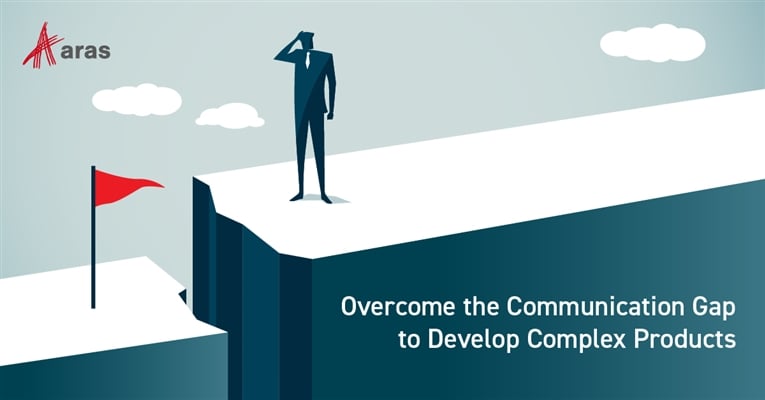Engineers from many different domains design and build today’s complex products. They commonly work in silos, which can cause problems that eat up time and money down the line. Design silos aren’t going anywhere, but companies can manage them—and improve product development—by supporting frictionless communication and collaboration.
Communication Across Silos is Key to Developing Today’s Complex Products
Today’s manufacturing market commands a strong demand for smart, connected products. These products offer consumers increased satisfaction and a superior experience. They also generate a wealth of operating data that the product team can feed back into the product development process.
Smart products’ development processes involve far more than just mechanical engineering. They incorporate many disciplines, including electrical, electronics, and ever increasing software content. Each discipline has its own design methodologies and specialized tools. Because of that, these engineers often end up working in silos across the entire product development process. And when the left hand doesn’t know what the right hand is doing, errors or delays result across the lifecycle. That’s why seamless collaboration between these silos is critical to successfully developing complex products.
What Causes Silos?
Developing modern products requires a strong, collaborative process. Many engineers from different engineering domains must contribute to the product to meet all of its requirements. Yet, each domain has its own processes, specialized vocabulary, tools, methodologies, data models, and best practices.
For example, electrical engineers responsible for cabling and harnessing or systems engineers working on system architecture will use different types of tools than the mechanical engineers who are working on the exact same product. There is no unified solution that can satisfy all engineers across domains. Though some solution providers are beginning to offer an all-in-one platform, it’s unlikely that engineers from different domains will be able to work from a common toolset anytime soon.
Because of the differences in experiences, tasks, and tools, this working isolation seems inevitable in modern product development. So teams have to somehow work across these silos to make feasible designs come to fruition. When they can communicate and collaborate effectively, they will design better products.
Succeeding Despite Silos
It’s clear that manufacturers have to find a way to bridge these silos through better communication and coordination. But what is the best way to do this? The answer lies in a system model that can provide a common context shared by engineers across silos.
The system model captures the design intent, the business needs coming from the field, the regulatory requirements coming from the authorities, and all other high-level requirements. It also breaks down the product into subsystems, giving each subsystem a clear function that can be tested in isolation. These different functional units can then be assembled to form the entire system architecture.
The system architecture gives all engineers a good understanding of what they must accomplish. Using this framework, the larger complex product can be divided into more manageable tasks and assigned to the appropriate team. When product-related conflicts arise, the system architecture can help resolve them. The silos still exist, but now teams can communicate well enough to develop the complex products demanded by today’s market.
Exposing Data Models Across Silos
But communication isn’t all that’s needed. Engineers in different domains also must find ways to manage data and share it with one another. They don’t always use the same data model, so this is often easier said than done. Yet, modern software has a solution: the application programming interface (API). Engineers can use APIs to share their data models with other departments at the granularity appropriate for the task on hand. In this way, they form the connections, or digital threads, that allow them to connect to digital twins of the physical assets in the field.
To make these interactions efficient, the digital threads need to be durable. That means the right kind of data must be exposed to other teams—and at the right granularity level. For example, a simulation analyst does not need to know about detailed production drawings. She simply needs access to the computer-aided design (CAD) models for her tasks. Similarly, a systems engineer doesn’t need to see design data for a wiring harness. An ideal digital thread will provide the most appropriate data to the people who need it the most.
It is also worth noting that the different tools used by various design domains change over time. To manage these changes, the APIs and the interactions they support may be broken, resulting in digital obsolescence. A successful product engineering team, however, will work proactively to maintain the digital thread leveraging tool agnostic data models. It is critical that companies avoid digital obsolescence while supporting communication and collaboration across design domains.
A Progressive Solution
Silos in modern product development teams are all but inevitable. In fact, as complex products demand input from more engineering domains, the number of silos may increase. Artificial Intelligence is a great example of such a new silo. Engineers in these silos need a common context from which to work: a system model. This model allows different domains to work together and resolve any conflicts that may come up. Organizations that add a progressive product lifecycle management (PLM) solution linking these silos via digital threads are in an even better position to succeed. Solutions that enable a truly collaborative working model, exposing the appropriate data to stakeholders across silos while avoiding digital obsolescence, are essential to support complex product development across the entire lifecycle.


